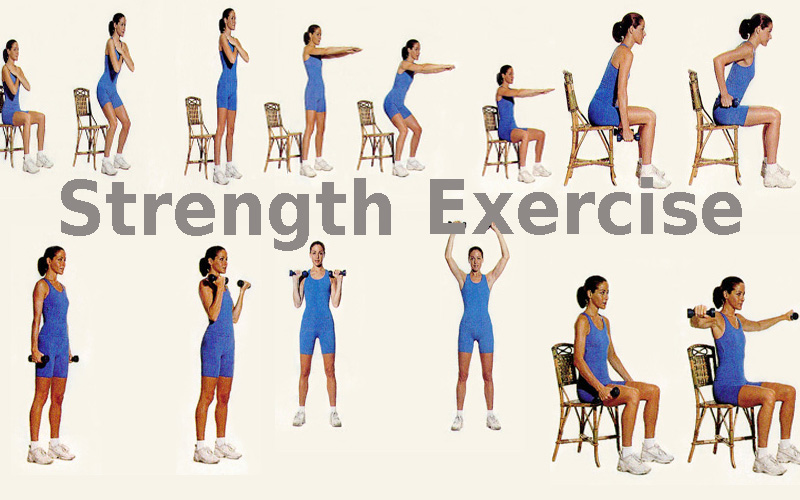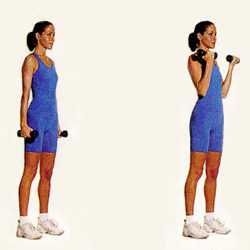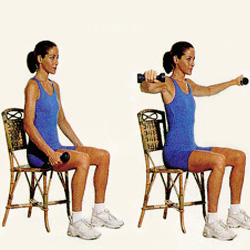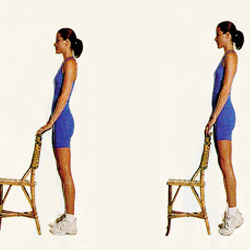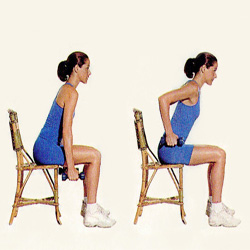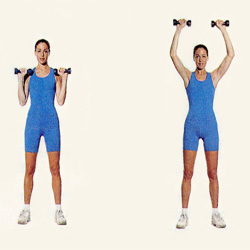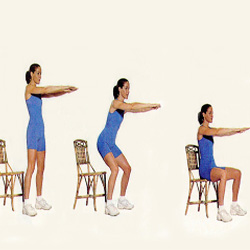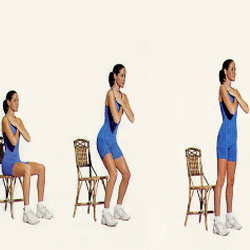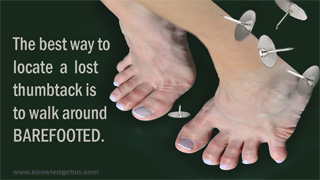Getting fit, loosing weight and reshaping our body are among the most common resolutions. It's also one of the toughest to keep, because we all have unrealistic expectations. Great news is that with easy strength exercises we recommend here, it may work out for you. Pick up a sensible goal and try to reshape your body with strength training for better composition.
A friend of mine who was always struggling with weight and tummy fat, trimmed up and reshaped her body nicely (two sizes down). After over 3 months of lock down, we were all pleasantly surprised to see her looking amazing. Everybody wanted to know what is her secret and how much she spent on personal trainer and special diet.
"No dieting or cutting of food is involved in my physical changes. I was just doing strength training for last 10 weeks." she replied. "No personal trainer, no gym, no books, just my mother's old magazine clippings and my sister's old dumbbells." she said.
So, to make long story short, I asked her for those magazine clippings. They are old and not in best shape, so I will organize, improve, and post them here (in shorter version, with instructions and illustrations) over the next couple weeks. Feel free to come back to this blog if you are interested to learn more or try out strength exercises.
The use of resistance equipment, hand weights or your own body weigh to build and sculpt muscle is the key to reshape your body. With strength training you don't merely lose weight, you give yourself the leaner, healthier body of someone who's naturally slim.
In addition to its less visible health benefits like increased vitality, improved mood, increased strength, improved sleep, better balance and flexibility, strength training is the most effective way to reshape your body. On the top of that, strength training prevents muscle and bone loss even in an especially vulnerable group: people who are dieting (regardless of age). Many people are shocked to learn that this is an at-risk category. They assume that when they lose weight, the only thing their body burns up is excess fat, which is not the case. Researchers have discovered that when people diet without exercise, between 20 and 25 percent of the weight they shed is water, muscle and other lean tissue. The less muscle people have, the harder is to lose weight and to maintain the weight loss. The main reason for that is because muscle is metabolically active, whereas body fat is inactive.
Unlike other programs, strength training doesn't need expensive equipment, clothing or gym membership. The only things you need are sturdy chair, athletic shoes and dumbbells. You can work out in your home or office and exercise plan requires just three 20-minute sessions per week.
During the first week of strength training, most people start with one-pound weights, but you will move up very quickly, so it is good idea to buy pairs of dumbbells in two, three, five, six, eight and ten-pound weights when you are ready for them.
Keep in mind that gradual improvement is key to beginning any new exercise routine. The "no pain, no gain" slogan of the past and achiness after workout is not a necessary indicator of a job well done. Delayed onset muscle soreness (DOMS) after a session, and up to three days afterward, is a sign that you worked out hard, but is not the only indicator of an effective workout.
Try to avoid common beginner mistakes of doing too much too soon, or going directly from the couch to the workout plan without stretching, can result in frustration at best and an injury at worst. Moderation will keep your body safe and your soreness manageable. My friend recommends to do 50 per cent of what you think you are physically capable of doing at the beginning and slowly progress. Then you won't hate it, you won't feel sore, and that will increase the likelihood that you'll stay consistent. She still remembers her old routine; one hour a day in gym for week or two - than not want to move for month or longer. So pick a sensible goal to help you stay motivated, then follow our advice on adding moderate exercise to your daily routine in ways you can stick with - no matter where you're starting from.
Here are a few general instructions about strength training exercises:
- Find a sturdy chair to use during your exercise.
- Wear athletic shoes during your strength training.
- Stretch before and after your exercise to prevent injury and to increase flexibility.
- Maintain a good posture to avoid muscle strain and injury.
- In this strength training a complete move is called a lift or repetition. A lift takes about nine seconds: four to raise the weight, a one-second pause, and four seconds to return the weight to the starting point. Eight repetitions make a set.
- Perform the lifts slowly. Keep in mind that your muscles won't get trained if momentum or gravity does the work. Counting out loud will ensure that you're not holding your breath -- a common mistake.
- Don't attempt to lift weights that are too heavy. You should be able to make the effort eight times in good form but need to rest afterwards.
- Increase the weight when the eight lift is no longer a challenge. Pain is a signal that you are pushing yourself too hard.
- Give yourself a day or two between strength training sessions to allow your muscles to rest.
- Keep a log of your progress: record weights lifted, repetitions and sets performed. Then you can look back and see how far you've come.
Note: Weight training (aka resistance training) is a must if you want to lose weight and keep it off.)



